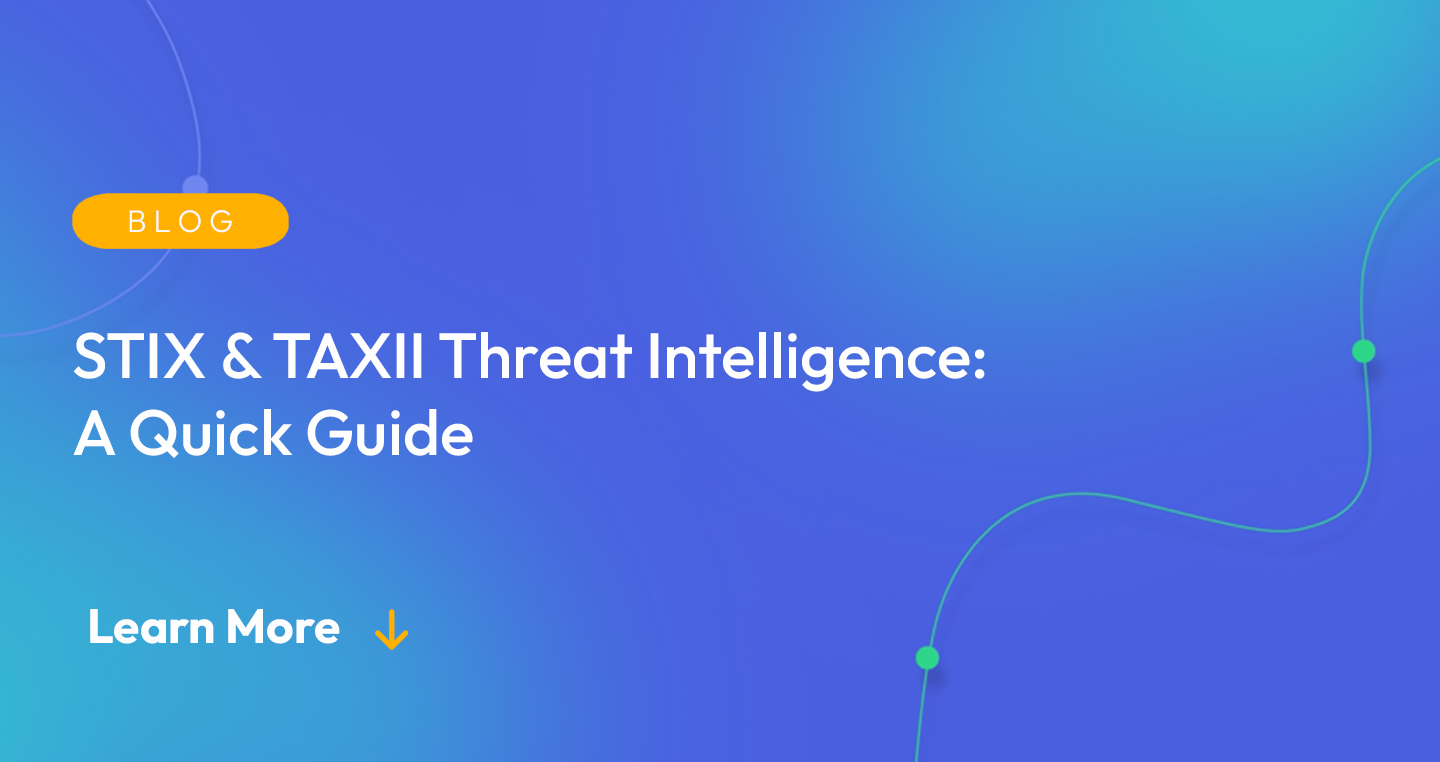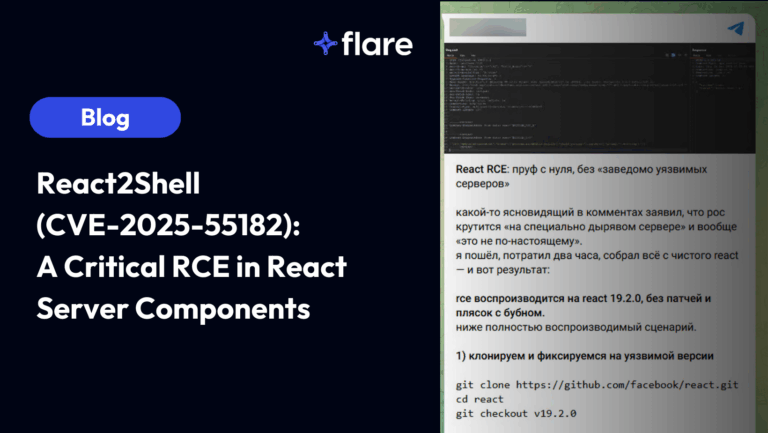
Among the various tools and frameworks available for cyber threat intelligence (CTI), STIX and TAXII stand out due to their robustness and interoperability. We present a quick guide to STIX (Structured Threat Information eXpression) and TAXII (Trusted Automated eXchange of Intelligence Information).
These protocols facilitate systematic sharing, correlation, and management of cyber threat intelligence, and they are increasingly being adopted by organizations worldwide.
Introduction to STIX and TAXII: Pioneering Standards in Cyber Threat Intelligence
As cyber threats continue to evolve in both scale and sophistication, there’s an escalating need for robust tools to identify, analyze, and mitigate them effectively. Within this rapidly shifting landscape, the introduction of STIX and TAXII has transformed how organizations approach CTI.
STIX (Structured Threat Information eXpression) and TAXII (Trusted Automated eXchange of Indicator Information) are pioneering standards developed under the Cyber Threat Intelligence Technical Committee, aiming to foster collaboration, standardization, and automation within the field of CTI.
What is STIX?
STIX is a standardized language that allows for the detailed representation and contextualization of cyber threat information. By providing a structured format, STIX ensures a unified way of describing diverse cyber threat information, thereby facilitating more effective communication, analysis, and application of this information.
What is TAXII?
On the other hand, TAXII is a communication protocol that supports the exchange of cyber threat information, including STIX data, in a secure and automated manner. It outlines how to transport these data, regardless of the method or mechanism, ensuring the safe, reliable, and efficient exchange of information.
Together, STIX and TAXII have come to form the backbone of modern CTI practices, facilitating interoperability, and enhancing the ability to detect, understand, and counteract cyber threats in a more unified and streamlined manner. The following sections delve deeper into the workings of STIX and TAXII, their benefits, and how they are leveraged in practical cybersecurity scenarios.
How STIX Facilitates Structured Cyber Threat Information Expression
STIX, or Structured Threat Information eXpression, plays a crucial role in the efficient exchange and understanding of cyber threat intelligence. By establishing a standardized language and structured data model, STIX enables organizations to consistently describe, capture, and visualize a wide array of cyber threat information in a unified, comprehensible manner.
STIX is designed to represent everything from basic cyber observables to higher-level constructs including:
- IP addresses
- Files
- Threat actor profiles
- Attack patterns
- Incident response tactics
STIX’s model is composed of several key components, each serving a unique function in capturing different aspects of cyber threat intelligence.
Components of STIX
These components, or domain objects, include:
Observables
These are stateful properties or measurable events that occur in the system or network, such as a detected malware hash or suspicious IP address.
Indicators
Indicators provide details on the specific patterns of observables or behaviors associated with cyber threats, along with relevant context such as confidence levels and the related threat types.
Incidents
This component records specific instances of a cyber event, providing a comprehensive picture of the event’s details, impact, related threats, and the response activities.
Adversary Behavior
This covers the tactics, techniques, and procedures (TTPs) used by threat actors, facilitating better understanding and prediction of potential future threats.
Threat Actors
This object encapsulates information about the actors behind cyber threats, including their:
- Identity
- Motivations
- Capabilities
- Objectives
By providing a consistent language to express these different facets of cyber threat information, STIX enables enhanced interoperability, data sharing, and collaboration among different cybersecurity tools and teams.
This is not only instrumental in forming a cohesive and comprehensive understanding of the cyber threat landscape but also in developing proactive defense strategies to counteract emerging threats effectively.
Unveiling the Role of TAXII in Trusted Automated Intelligence Exchange
While STIX provides a structured format for expressing cyber threat information, TAXII, or Trusted Automated eXchange of Intelligence Information, serves as the dedicated transport mechanism for sharing this information. TAXII complements STIX’s structured language by facilitating automated and secure exchange of STIX content across different networks and platforms.
At its core, TAXII is a protocol defined by a set of services and message exchanges that enable organizations to share cyber threat intelligence in a secure and automated manner. TAXII is agnostic to the type of information shared, meaning it can transport any type of cyber threat information that adheres to the STIX format.
Components of TAXI
TAXII defines several key services that control how information is exchanged, including:
Discovery Service
This allows a TAXII client to locate services provided by a TAXII server. It serves as the initial interaction point between a client and a server.
Collection Management Service
This service provides an overview of the available data collections that a client can subscribe to or from which it can request information.
Inbox Service
This enables a client to send information to a server or another client. It’s used for pushing information.
Poll Service
This is the opposite of the Inbox Service. It allows a client to request information from a server. It’s used for pulling information.
TAXII’s secure and automated exchange mechanism not only improves the efficiency of intelligence sharing but also minimizes the chances of human error. By utilizing HTTPS for its message transport, TAXII ensures that the threat intelligence shared is secured and integrity-protected.
The integration of STIX and TAXII offers a powerful combination for cybersecurity—STIX allows different parties to express what they want to say in a standard language, and TAXII provides the means to convey this information in a trusted and automated manner. This enables organizations to gain a broader and more comprehensive understanding of the cyber threat landscape, fostering a more proactive and informed approach to cybersecurity.
Leveraging STIX and TAXII for Enhanced Cybersecurity: Practical Applications and Benefits
Implementing STIX and TAXII into your cybersecurity strategy opens up a world of possibilities for enhanced protection. By leveraging these two resources, organizations can create a comprehensive, well-rounded approach to identifying and mitigating threats.
One of the most significant benefits of STIX and TAXII is the increased visibility into the cybersecurity landscape. By communicating threat information in a standardized format, organizations can glean insights from multiple sources, resulting in a more detailed understanding of potential threats and their indicators.
Practical Applications of STIX and TAXII
These technologies are not only applicable for threat detection, but also for incident response, threat analysis, and cyber defense enhancement.
Threat Detection and Prevention
Organizations can use STIX and TAXII to share information about newly discovered threats, allowing for the rapid deployment of preventative measures across various platforms.
Incident Response
When a cyber incident occurs, quickly understanding the nature of the attack is crucial. STIX-formatted threat intelligence enables responders to understand the threat’s tactics, techniques, and procedures (TTPs), facilitating quicker and more effective responses.
Risk Management
STIX threat intelligence can also be used to inform risk assessments and management processes, providing organizations with a more accurate view of their security posture and the potential impacts of identified threats.
Automated Defense Systems
The structured nature of STIX and the automated transport mechanism of TAXII enable the automation of certain cyber defense tasks, such as the updating of firewall rules or the deployment of intrusion detection systems (IDS).
The integration of STIX and TAXII into cybersecurity strategies can significantly enhance an organization’s ability to identify, understand, and respond to cyber threats. Their standardized, automated nature enables swift communication and action, while their widespread adoption ensures a broad community of users contributing to the shared intelligence pool. With these tools at their disposal, organizations are better equipped to protect their systems and data from the ever-evolving landscape of cyber threats.
Navigating Cyber Threats with Flare
In summary, the integration of STIX and TAXII in a cybersecurity strategy is pivotal in navigating the increasingly complex landscape of cyber threats. These pioneering standards of STIX and TAXII provide a structured, standardized, and automated framework for sharing, correlating, and managing cyber threat intelligence. This results in greater visibility into potential threats and faster action for remediation.
Flare monitors billions of data points in illicit communities across the clear & dark web and illicit Telegram channels. With automated external threat management, your team can respond more effectively, without the noise. Start your free trial today to see how Flare can fit into your cyber strategy.





